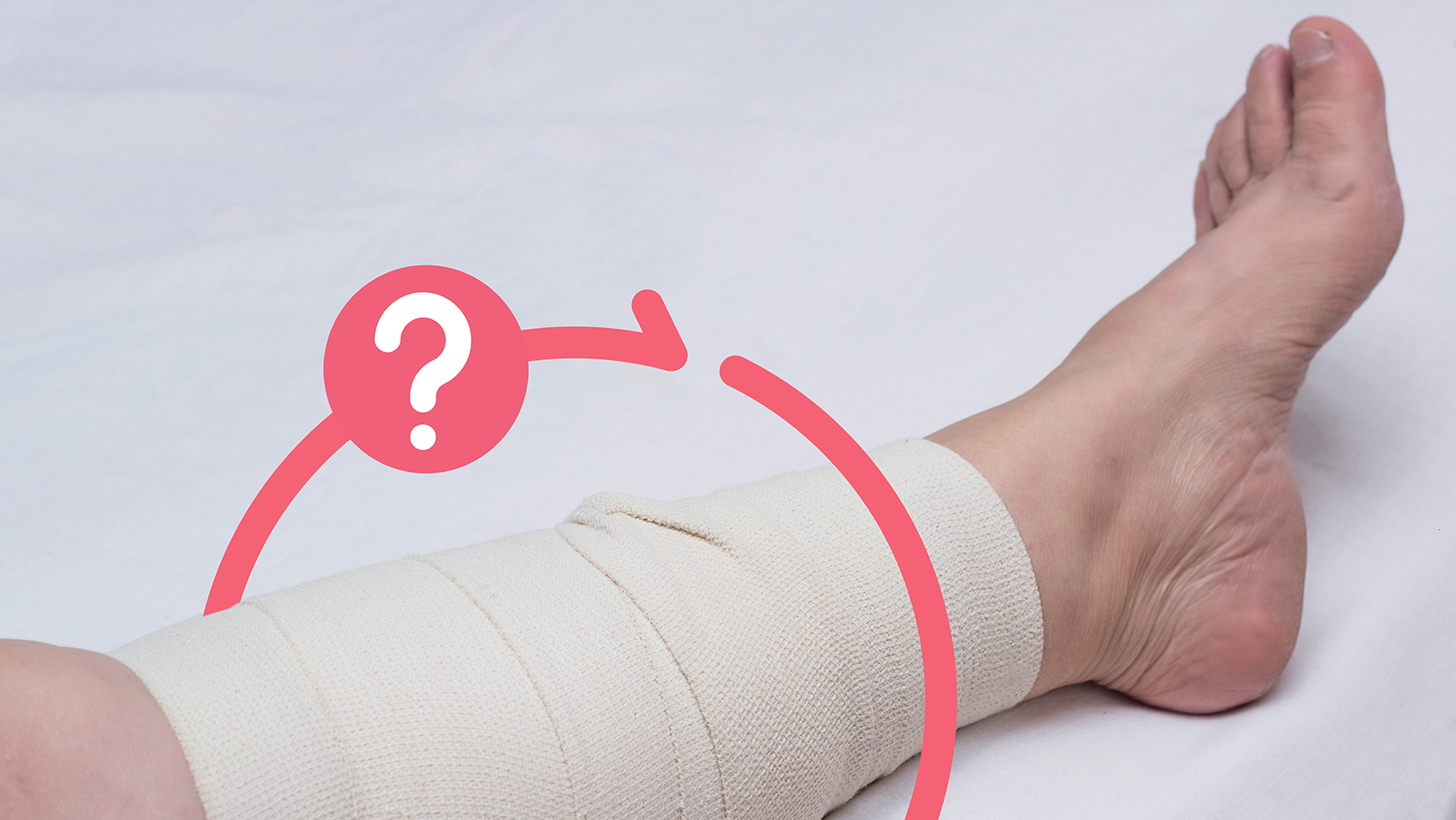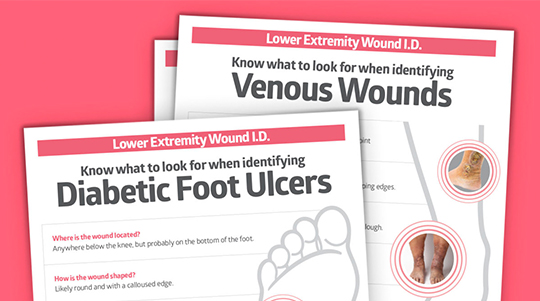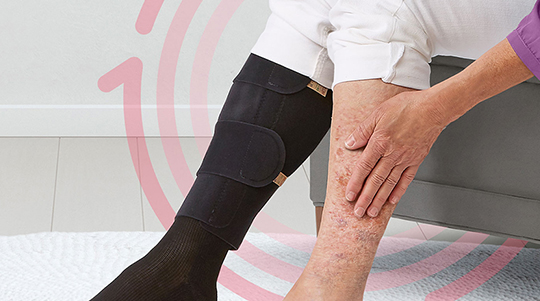Venous stasis: What staff should know to help improve care
Must-know strategies to help prevent venous leg ulcers.

Studies show that up to 35% of adults in the U.S. suffer from venous stasis disease, and 4% of adults over 65 have a venous leg ulcer (VLU).1 Venous leg ulcers can be challenging to heal, painful for patients and costly to the healthcare system. The worse these wounds get, the longer they take to heal and, on top of that, they often come back.
That’s why it’s important to empower staff with information to recognize the underlying venous stasis disease (or chronic venous insufficiency) before it leads to lower extremity wounds, infection or even death.
1/3
of all adults in the U.S. have venous stasis disease.1
1 in 25
adults over 65 have a venous leg ulcer.1
Here are some ways to help boost staff knowledge.
Know these 10 symptoms of venous stasis disease
Be sure your staff learns how to identify the signs of venous stasis through observation and asking patients targeted questions about how their legs feel. One or more of these 10 characteristics may indicate a need for treatment to prevent a venous leg ulcer from developing:2
- Aching, heaviness or cramping
- Itching and tingling skin
- Pain that gets worse when standing
- Pain that improves when legs are raised
- Swelling in the legs
- Irritated or cracked skin
- Red, swollen, crusted or weepy skin
- Varicose veins at the surface
- Thickening and hardening of skin
- Existing wounds that aren’t healing
Ensure staff have the tools to manage chronic venous insufficiency
There are several important aspects to managing venous stasis disease. Start by helping staff understand these 3 factors:
- Venous stasis disease is essentially a consequence of poor blood flow. To enhance blood flow and balance pressure, compression therapy is considered the gold standard. Successful compression relies partly on choosing the right product. Check out this chart to help select what might be the most effective option for your patient.
- Another key to managing venous stasis is patient adherence to compression therapy. Caregivers can help patients stay the course by asking about their compression concerns. Do they think it’ll be hot, difficult to use or uncomfortable? Understanding patient apprehension helps staff know how to tailor therapy appropriately. They can ease some common concerns by recommending a comfortable, effective, at-home compression garment that’s easy for individuals to remove and reapply.
- Remember that the skin requires proper care as well. During patient visits, cleanse and moisturize intact skin on the leg as you assess progress and answer any questions a patient might have about therapy.
“Nurses need to feel confident in their knowledge of disease states.”

Patricia Turner
BSN, RN, CWOCN, CWS, Medline Director of Clinical Resources
Give staff a leg up on identifying and treating venous leg ulcers
Does your patient already have a lower extremity wound? If so, the first step to treating it is confirming it’s a venous leg ulcer and not another common type of lower extremity wound.
“Nurses need to feel confident in their knowledge of disease states and what it takes to heal a wound in order to be persistent and persuasive in implementing the right treatment plan,” says Patricia Turner, BSN, RN, CWOCN, CWS, Medline Director of Clinical Resources.
Here are 5 signs of a venous leg ulcer:
- Location is between the knee and ankle and may be circumferential
- Shape is irregular, large and shallow
- Coloring is ruddy red and appears swollen and often partially covered with yellow slough
- Exudate is moderate to heavy
- Area around the wound may be macerated, crusted and scaled
Just as compression plays a lead role in managing venous stasis disease, it’s also a crucial component of healing a venous leg ulcer.
Choose a compression wrap that makes it easier for staff to achieve optimal pressure and that can remain in place until a patient’s next clinical visit. If you’re staff needs a review of compression wrapping techniques, reach out to a Medline Skin Health expert to arrange a workshop.
Remember that poor nutrition can delay wound healing, including a venous leg ulcer. Protein is necessary for cell growth, and high wound exudate can mean the loss of potentially high amounts of protein.3 If you suspect malnutrition, you may want to consult with a registered dietician to discuss protein supplements.
Key takeaway
When you help educate nurses on the symptoms of venous stasis disease and venous leg ulcers, you can save nursing time and facility resources, drive better outcomes and improve quality of life for your patients. The right compression tools and techniques make it easier for you and your staff to help keep patients comfortable and help them adhere to therapy.
References:
- American Academy of Family Physicians, Bonkemeyer Millan, MD, S., Gan, MD, R., & Townsend, MD, P. E. (2019, September). Venous Ulcers: Diagnosis and Treatment. American Family Physician.
- Venous insufficiency. (2020). National Library of Medicine: MedlinePlus. Available at https://medlineplus.gov/ency/article/000203.htm
- Russell L. The importance of patients’ nutritional status in wound healing. British Journal of Nursing. 2001; 10(6 Suppl): S42,S44-49. Available at: https://www.ncbi.nlm.nih.gov/pubmed/12070399




